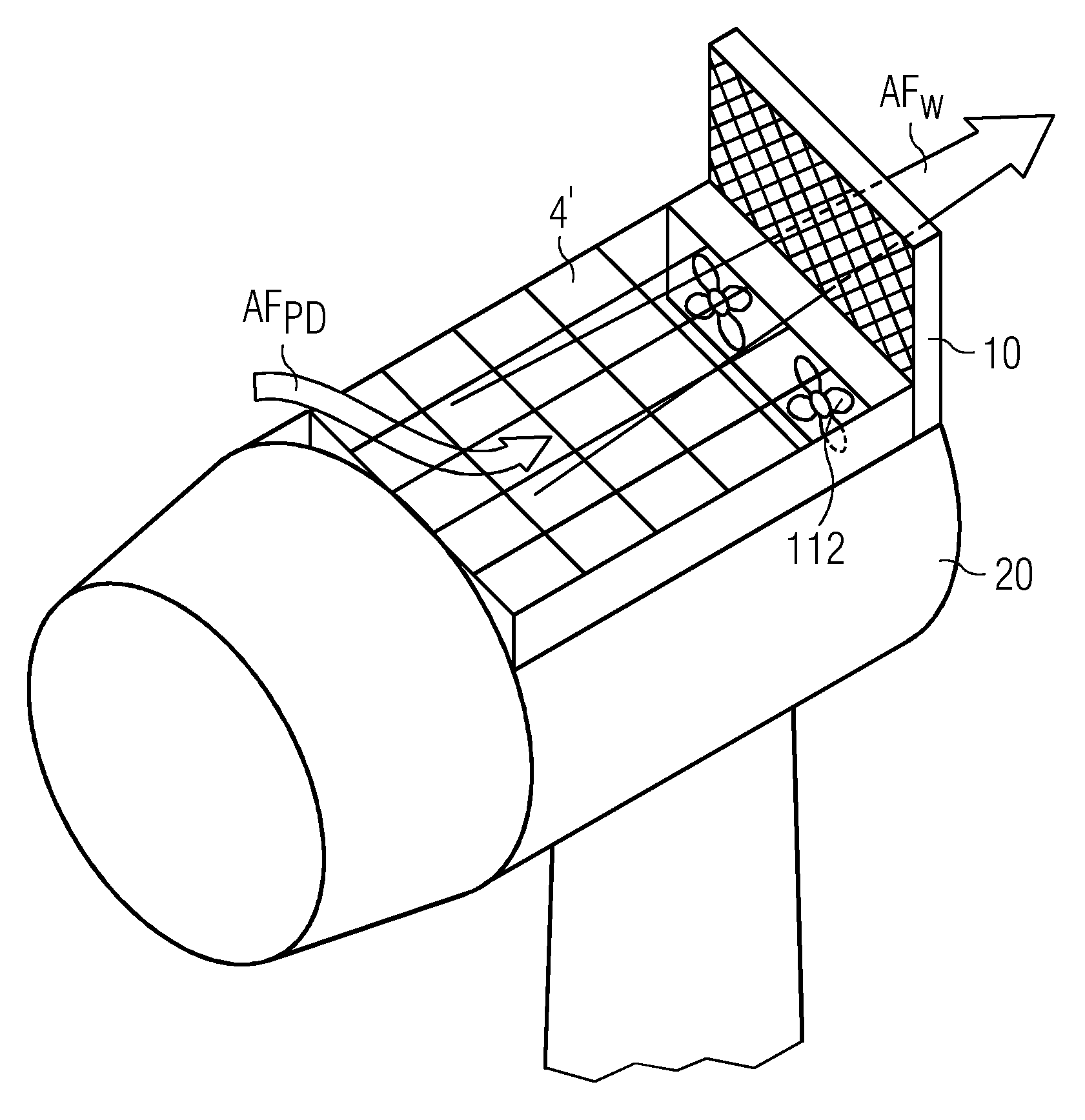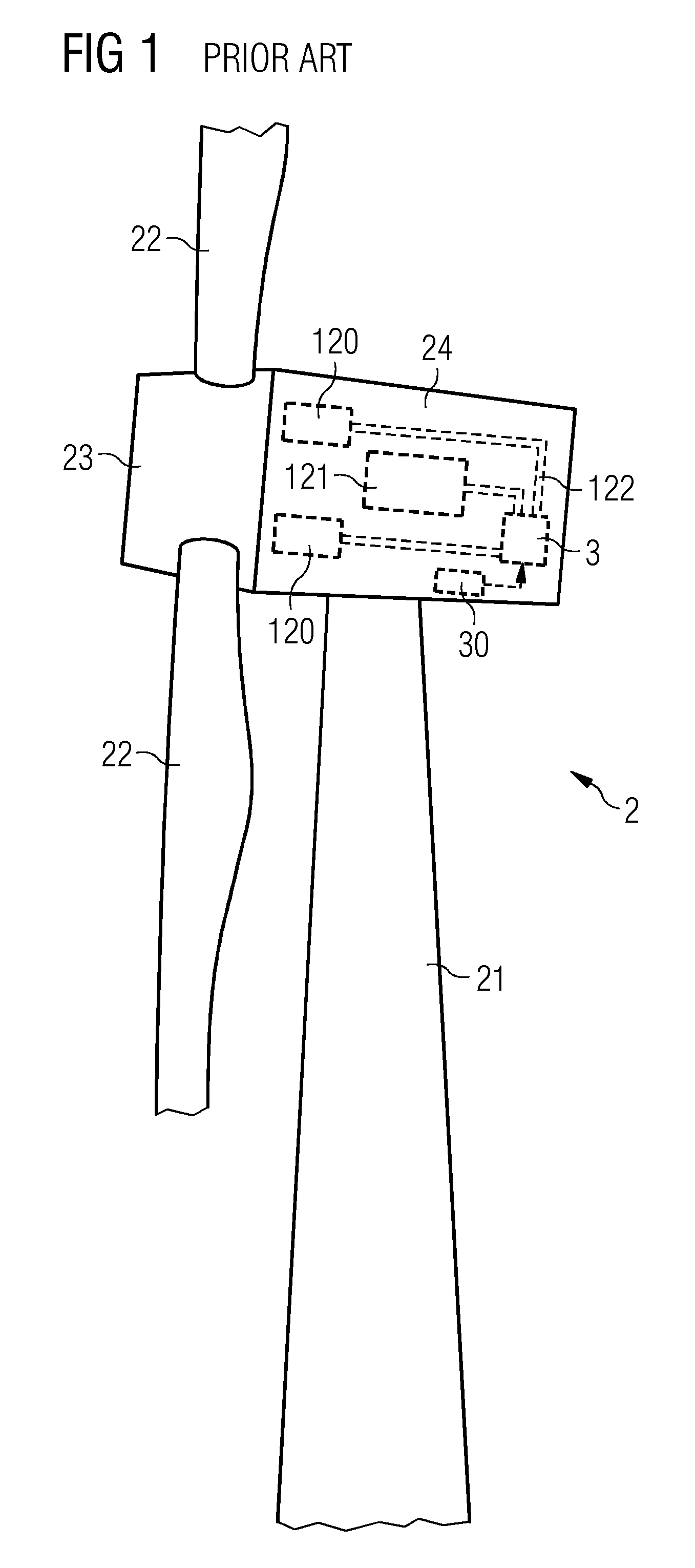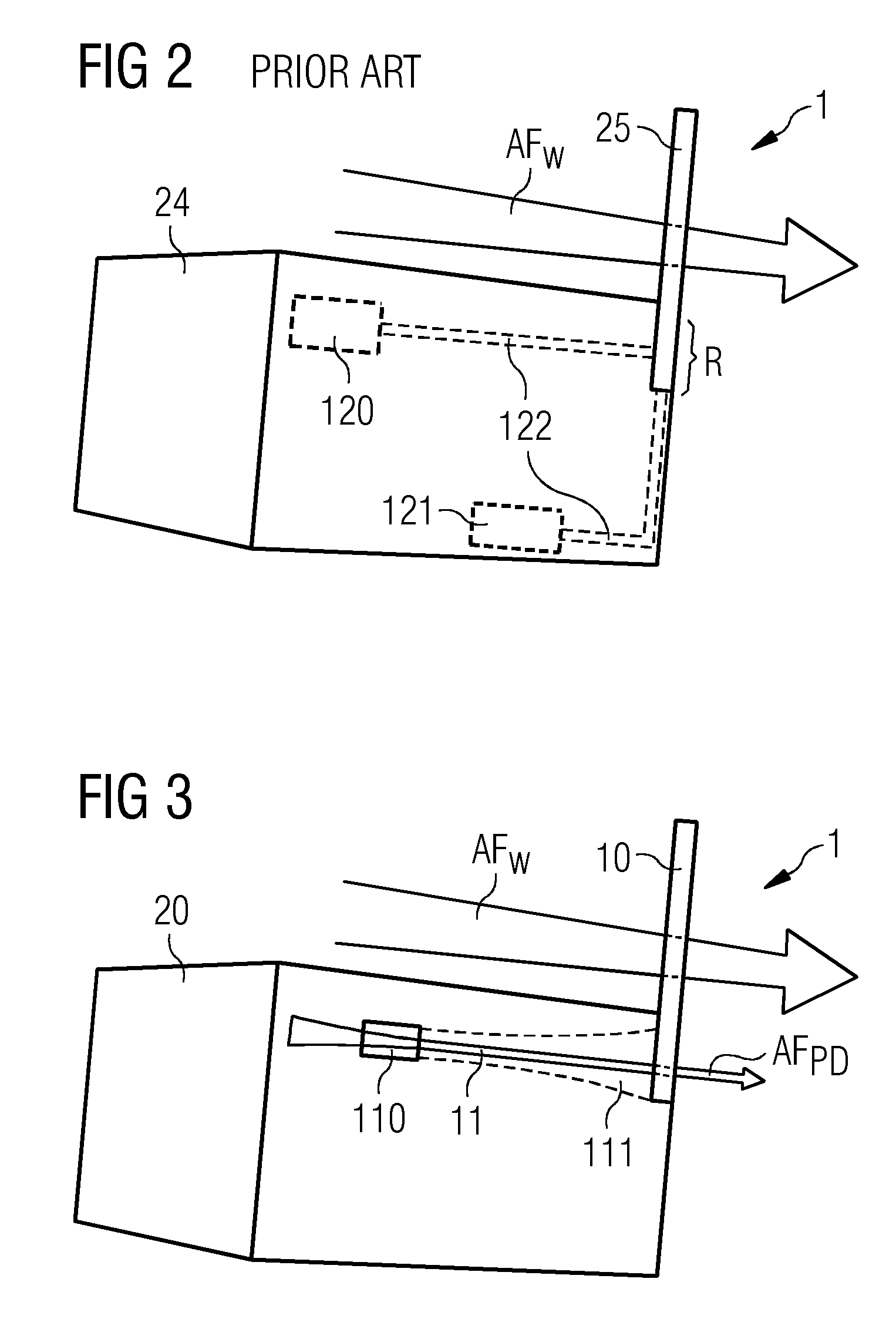Wind turbine cooling arrangement
a cooling arrangement and wind turbine technology, applied in the direction of electric generator control, machines/engines, mechanical equipment, etc., can solve the problems of limiting cooling capacity, active cooling is associated with costly machinery, etc., and achieve the effect of improving the cooling arrangemen
- Summary
- Abstract
- Description
- Claims
- Application Information
AI Technical Summary
Benefits of technology
Problems solved by technology
Method used
Image
Examples
first embodiment
[0035]FIG. 3 shows a schematic representation of the canopy 20 of a wind turbine 2 with a cooling arrangement 1 according to a For simplicity, the heat-generating components and the conduits for a heat transfer fluid are not shown, but may be assumed to be as shown in FIG. 2 above. Here, the cooling capacity of a passive heat exchanger 10 is augmented by an additional cooling means or ventilation means, in this case, an air channel 11 arranged in the interior of the canopy 20, with an air inlet 110 on the side of the canopy 20, and an air outlet 111 arranged to open onto the passive heat exchanger 20. The air channel 11 with its air inlet 110 and air outlet 111 is arranged to make use of the pressure difference in air pressure at different regions about the canopy, so that the air pressure at the air outlet 111 is lower than at the air inlet 110. The air outlet 111 is arranged to open directly onto the heat exchanger 10. In this way, airflow AFPD is effectively drawn of its own acc...
second embodiment
[0036]FIG. 4 shows a schematic representation of the canopy 20 of a wind turbine 2 with a cooling arrangement according to a This diagram also shows the fins 101 of the heat exchanger 10. Here, the passive heat exchanger 10 or panel 10 is mounted on the canopy 20 in such a way that it forms part of a heli-hoist platform 4 on top of the canopy 20. The height of the panel 10 in this embodiment does not exceed 1.5 m above the height of the platform floor, since 1.5 m is the maximum allowable height according to the European aviation authorities. A helicopter may therefore safely hover above the platform while maintenance workers are lowered to or lifted from the platform 4, for example by means of a motorised winch in the helicopter. Any railings 40 or safety features such as warning lights 41 may be arranged to avoid any obstruction of an airflow AFW over the panel 10.
third embodiment
[0037]FIG. 5 shows a schematic representation of a wind turbine 2 with a cooling arrangement 1 according to a Here, the canopy 20, passive heat exchanger 10 and inlets 110 are shown from above. The cross-sectional view of the passive heat exchanger 10 schematically indicates a heat dissipating structure 101 arranged within a housing 100, for example an aluminium housing 100, with a plurality of vertical fins 101 separated by intervening spaces to maximise the area of the heat-dissipating structure 101. In this embodiment, two air channels 11 are arranged within the canopy 20. The diagram also shows a possible shape for the air channels 11, in this case, the air inlets 110 are positioned to either side of a highest part of the canopy 20, and the air outlets 111 are relatively wide, flaring towards the ends of the channels 11 to give a combined opening onto the base of the passive heat exchanger 10. Again, the air outlets 111 are arranged to open directly onto the hottest part of the...
PUM
 Login to View More
Login to View More Abstract
Description
Claims
Application Information
 Login to View More
Login to View More - R&D
- Intellectual Property
- Life Sciences
- Materials
- Tech Scout
- Unparalleled Data Quality
- Higher Quality Content
- 60% Fewer Hallucinations
Browse by: Latest US Patents, China's latest patents, Technical Efficacy Thesaurus, Application Domain, Technology Topic, Popular Technical Reports.
© 2025 PatSnap. All rights reserved.Legal|Privacy policy|Modern Slavery Act Transparency Statement|Sitemap|About US| Contact US: help@patsnap.com



